- Administrator
- Albums and Singles
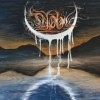 Rainfall, thunder, crickets, and the toll of a distant church-bell introduce the title track of YOB's sixth album. It sounds nearly identical to when Black Sabbath used the same handful of effects to open their debut 40 years ago. If a lesser band was doing this, I'd cry foul—but this is one of the year's most accomplished metal albums.
Rainfall, thunder, crickets, and the toll of a distant church-bell introduce the title track of YOB's sixth album. It sounds nearly identical to when Black Sabbath used the same handful of effects to open their debut 40 years ago. If a lesser band was doing this, I'd cry foul—but this is one of the year's most accomplished metal albums.
After four solid albums, culminating in 2005's monumental The Unreal Never Lived, doom metal torch-bearers YOB called it a day. Fast-forward a couple years, and YOB reunited for a few live shows and an excellent "comeback" album, The Great Cessation, also released on Profound Lore. Atma, the band's second full-length since their reunion, is altogether more varied and vibrant—all the way down to its colorful cover painting, a stark contrast to the tar-black artwork of The Great Cessation. Also, compared to their last effort, there is a gritty, distorted tone to Mike Scheidt's guitar that cuts sharply through the production like a warm knife into butter.
Following in the wake of doom heavyweights like Saint Vitus, Cathedral and Electric Wizard, YOB are the decade's best candidate to carry the torch of Sleep. Atma follows in the tradition of such indisputable classics as Jerusalem and Holy Mountain, with higher aspirations than grinding out heavy-as-concrete riffs all day. Instead, there is an intense focus on mantra-like repetition and spirituality that aids the seeking of higher planes of consciousness—even for folks like me, who don't partake in any type of "sweet leaf" unless to brew a fragrant cup of green tea. Most of Scheidt's lyrics are unintelligible, but I managed to catch a few lines early on: "One hundred thousand / repetitions / recite the mantra / flowers unfold." (I'm guessing that's a representative sample, unless proven otherwise.)
The 16-minute centerpiece, "Before We Dreamed of Two," is a highlight, beginning with Scheidt's guitar wailing over the steady, forceful rhythm section. Shortly thereafter, Scheidt falls into lockstep playing with the others, firing off his words in rhythmic, meditative fashion, like a possessed shaman. Minutes pass, the tempo slows to a crawl, and the rhythm section drops out, leaving a low rumbling sound and the gentle ebb of waves, alongside Aaron Reiseberg's rubbery bass lines and Scheidt's ruminations on self—until the band comes crashing back for the finale. Perhaps this is what Om would sound like if Al Cisneros popped a Vicodin or two after an intense yoga session, cranked the low-end distortion up to 11, and let completely loose with his latest band.
By the time the final song, "Adrift in the Ocean," comes around, YOB have built up a sky-high framework of tension through repetition. The song starts to move through interweaving bass and guitar lines—sinewy and complex, sounding like an instrumental outtake from Tool's Lateralus. (I liked Lateralus.) Once the doom strikes in full force, Scott Kelly of Neurosis makes his second guest appearance on the album, trading spiritually prescient lines with Scheidt: "To the universe / we send a reflection." Meanwhile, the rhythm section encircles the monster riff at the song's center like a pack of bloodthirsty wolves. By the time Scheidt strikes with a searing solo at the song's end, I cannot help but declare that Atma is YOB's strongest work to date.
Samples:
Read More
- Duncan Edwards
- Albums and Singles
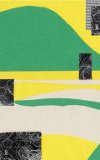 Under the name FWY! (pronounced Freeway) Edmund Xavier offers a hypnotic instrumental tribute to various California highways.
Under the name FWY! (pronounced Freeway) Edmund Xavier offers a hypnotic instrumental tribute to various California highways.
 
Brave Mysteries
These 11 excellent pieces hint at the ideal image of the motor car; one shrouded in the mystical allure of desire and personal freedom. There are no traces of potholes, gridlock, murder, accident, or low-speed chase. Even the short ode to (notoriously congested) "The 405" has the impressionistic beauty of an orchestra of very faint car horns. Elsewhere, synths bubble gently under clean, driving bass lines and an occasional fuzzy chord low in the mix hits like a distant wave heard on a coastal drive in an open-top car. On "The 57" gorgeous soft guitar creates a musical landscape that is part polluted sunshiny perfection, part neon heaven. The music throbs with a gliding, cooperative movement akin to "Autobahn" rather than the bouncy optimism of, say, "Route 66." Xavier creates uncluttered, shimmering, cruise-controlled moods, by lightly and smoothly applying drum machines, guitar, field recordings, bass, casiotone, organ, and synth. The moods are pleasantly familiar but as unnatural as a passing world, seen through glass.
Released on cassette, CA 80’s-90’s makes me wish to drive in California again (and for a tape-player in the car).
Read More
- Creaig Dunton
- Albums and Singles
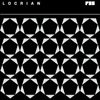 While 2010 was an insanely productive year for Chicago's Locrian, 2011 has been relatively quiet: other than the two releases with Horseback, this single is the only thing that’s been released. Mixing a Popol Vuh cover on one side with an original piece on the other, the result is an all too brief example of the band excelling at what they do best.
While 2010 was an insanely productive year for Chicago's Locrian, 2011 has been relatively quiet: other than the two releases with Horseback, this single is the only thing that’s been released. Mixing a Popol Vuh cover on one side with an original piece on the other, the result is an all too brief example of the band excelling at what they do best.
"Dort Ist Der Weg" is the band at their most "rock," I would say, and I mean that as a total compliment.Rather than their more abstract work, this is rather straight forward:Steven Hess' steady drumming, glacial synths by Terence Hannum, and alternating dissonant and melodic guitar by Andre Foisy.With female vocals provided by an uncredited performer (possibly Hannum's wife Erica, who has contributed on other works), it has all of the cold precision of the best krautrock, but an inviting, memorable sound to it that stays faithful to the original version while still going in its own direction.
The flip side, "Frozen in Ash," is more traditional Locrian, with Foisy's rapid-fire blackened guitars and Hannum's effected, pained screams.However, a bit past the half way mark, the harshness is balanced with clear acoustic guitar chords and subtle keyboard punctuations.The combination of noise and melody eventually builds to a dramatic climax before quietly fading away.
With the Popol Vuh cover channeling their more "rock" oriented Territories album, and "Frozen in Ash" capturing the dark, foreboding caverns of The Crystal World, this brief single really acts as a brilliant statement of purpose for the band, really emphasizing their ample strengths.
Read More
- Creaig Dunton
- Albums and Singles
 Mixing an unabashed appreciation for the alternative scene of the early to mid 1990s, Boston's Soccer Mom have a familiar, but not derivative sound that arouses nostalgia without being stuck in the past.
Mixing an unabashed appreciation for the alternative scene of the early to mid 1990s, Boston's Soccer Mom have a familiar, but not derivative sound that arouses nostalgia without being stuck in the past.
Putting this EP on, I was instantly reminded of that post-Nirvana world of alternative that briefly existed before it became commercially viable.The sort of music that was played on the original incarnation of 120 Minutes:the residuals of jangly '80s melodies and the feedback and distortion that bands like Loop did so well.
"Salty Wyoming," for example, pushes a bit of that early REM jangle with outbursts of tremolo-laden guitar squall that, at the time, were very different scenes, but here the two sides come together perfectly, resulting in a catchy song that feels familiar, yet retains its own identity.
Other tracks, like "Celebrity Unrest," are a bit more adventurous:after a protracted, chugging instrumental intro, vocals appear briefly, only to lead to the song fragmenting itself, leaving traces of feedback and deliberate guitar melodies behind before launching together once again.
The atmospheric "Unwanted Sounds" also strikes a delicate balance, with a rather pretty ambient backing juxtaposed with rapid-fire drums and overdriven bass.Similarly, the initially skeletal structure of "Southern Bells" becomes fleshed out with sheets of caustic guitar that just as quickly pull away to its original sparseness.
While I usually go for harsher, more aggressive sounds, this debut EP manages to bring in just the right amount of ugly noise with a catchy framework.Coupled with that warm, inviting feeling that reminds me of watching the VHS tapes of 120 Minutes after school on Monday afternoons, there was a lot to enjoy on here.While '90s nostalgia seems to be rushing in unabated, Soccer Mom isn’t riding on that current alone, instead they’re channeling the past while still focusing on music more than trends.
Read More
- Administrator
- Albums and Singles
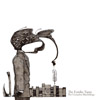 Compiled from various limited sources, this two disc compilation captures a distinct period in Anthony Mangicapra's art, all recorded while he was living in Eureka, California. Even though they are from the same relative time, there is a distinct variety in sounds and textures. Never in the two-plus hour span does the work begin to drag, which is a rare feat in compilations such as this.
Compiled from various limited sources, this two disc compilation captures a distinct period in Anthony Mangicapra's art, all recorded while he was living in Eureka, California. Even though they are from the same relative time, there is a distinct variety in sounds and textures. Never in the two-plus hour span does the work begin to drag, which is a rare feat in compilations such as this.
Mangicapra's work is quite unique, though there does seem to be some unity with the likes of NWW and some of Coil's more esoteric, ritualistic output.The pieces on here are just so multifaceted, sometimes mixing droning tones with textural studies and even a little bit of "traditional" music, such as the combination of sounds on "Secrets from a Silk Purse."With what sounds like piano being piped in from across the hall, there's a balance of raw, high frequency tones and heavily reverberated crashes of unknown origin coming together.
Other pieces have a bit less of the maximalist approach going on, but the mood is never hindered by a reduced sonic palette.Both "Departure of the Icicle Man" and "Everything Gets Devoured, Eventually" focus more on deep, rattling bass tones and a more subtle sense of fluctuation, both slowly slithering along to create a distinctly dark, menacing mood.
The darkness that is exemplified on these two tracks are present throughout all of the pieces, but it is never the main focus.Rather than wallowing in malevolent or depressing moods, it is simply another ingredient in the work.It’s actually quite overt in "In the Distance, it Shimmers," though:violent, aggressive crashes and shattering glass erratically interrupt the otherwise sparse ambience surrounding them.It is jarring and disquieting, to say the least.
While picking favorites is a fool's game, I did find myself most impressed with the pieces that precariously balance pure chaos and traditional "music."Processed field recordings provide an abstract foil to the more plaintive guitar playing on "The Broken Windows of a Fertile World," which is overall pretty simple, especially when compared ot other pieces, but I found it quite effective.The messy, cut up voice fragments and bass guitar on "Sobering Peaks Backward Twins" are another good example of this, and together they weave this bizarre form of psychedelic music that sounds like no one else.
Whether going the musique concret route and using "instruments" such as ripping paper (on "Lacking a Cast Shadow") or putting thudding rhythms with synths and pure noise (on "The Self is an Onion Self"), Mangicapra's work is complex, idiosyncratic, and brilliantly diverse.Bits of noise, drone, krautrock, etc, can all be found here, and thankfully this material has been compiled, rather than being lost to the purgatory of limited formats.
samples:
 
Read More
- Creaig Dunton
- Albums and Singles
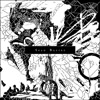 Having a few collaborations out there with Anthony Pateras and David Brown, Australian percussionist Sean Baxter uses only drums on this single, with two distinctly different approaches to playing them. While the results are rather consistent with the world of free jazz, the microscopic elements of sound that shine through add an entirely new layer of depth to the recording.
Having a few collaborations out there with Anthony Pateras and David Brown, Australian percussionist Sean Baxter uses only drums on this single, with two distinctly different approaches to playing them. While the results are rather consistent with the world of free jazz, the microscopic elements of sound that shine through add an entirely new layer of depth to the recording.
"Metal" is a multitude of clattering wind chimes and chaos, propelled by constant drumming under the morass.While at first glance it might seem like an intentional mess of sound, a closer listen reveals a lot of sonic nuance and detail exhumed from just percussive sounds, without any effects or processing.The raw, violent rattles of metal are beautifully underscored by rich, booming bass drum sounds that are perfectly recorded.
On the other side, "Flesh," the sounds are more sparse and given room to breathe.While much of the drumming was done via metallic items previously, on here Baxter used only his body to play the drum kit.It feels less violent and raw in comparison, the dramatic swells of bass drums are balanced out by careful flicks of a snare drum skin.As a result, the overall feel is simply more organic and human, as a clear byproduct of the way it was recorded.
While the instrumentation is Spartan by design, Baxter teases a wide world of nuance out of the traditional drum kit, mixing pensive, meditative pauses at one moment, then crashing noise and aggression the next.The way this single was recorded also must be recognized, as I’ve rarely heard drums sound this pure and lush:there’s a richness to be heard in each beat that few recordings have.
Read More
- Administrator
- Albums and Singles
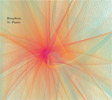 A disturbingly prophetic release, this album was sparked by Geir Jenssen's interest in the post-war Japanese economy, and especially the nuclear power plants that were built, often in geographically precarious positions. The album was completed in February of this year: one month prior to the tsunami that damaged the Fukushima power plant. Sonically it's a bit more conventional than what Touch has been doing as of late: there are actual beats and melodies on here, but with the unique Biosphere edge.
A disturbingly prophetic release, this album was sparked by Geir Jenssen's interest in the post-war Japanese economy, and especially the nuclear power plants that were built, often in geographically precarious positions. The album was completed in February of this year: one month prior to the tsunami that damaged the Fukushima power plant. Sonically it's a bit more conventional than what Touch has been doing as of late: there are actual beats and melodies on here, but with the unique Biosphere edge.
Jenssen has created a wide variety of electronic music during his nearly two-decade career, and N-Plants fits nicely into this discography.While the tracks use sequenced synth melodies and analog drum machine rhythms, it mostly takes its own route, using these conventional elements in unconventional ways."Jōyō", for example, is mostly sharp high end sounds paired with an erratic, heavily filtered rhythm that sounds nothing like music to dance to, even when the dense synth strings arrive.
"Ōi-1" patches together clicking, fragmented bass lines with short electronic pulses and blips into an idiosyncratic mix that stays even when the more traditional rhythms kick in.Tracks like "Shika-1" err more into "normal" territory, with its syrupy melodies and radio wave static augmenting an otherwise traditional ambient techno vibe, though bolstered by some great old school electro synth sounds.
The missteps are, to me, the moments in which Jenssen starts to follow more traditional blueprints of electronic music.The slow, steady beats and repetition of "Ikata-1" are nice, if forgettable in the grand scheme of things.Some of the sounds in "Genkai-1" are great on their own:deep bass rhythms and a synth line pulled right out of New Order’s "Hurt," but as a whole it just becomes a rather faceless down-tempo electronic track.
These are exceptions rather than the rule on N-Plants, however.There are more moments like the textural static and Kraftwerk like synth bleeps on "Monju-2" that come together brilliantly.The closing "Fujiko" ends the album on a high note, with its sparse structure and voice samples coming together into a calm, mellow close without being trite or cliché.
It was a bit surprising for me to hear this coming off of Touch, who have been much more abstract and oblique in their recent releases.N-Plants isn't a conventional techno album by any means, but in comparison to the recent releases from the likes of CM von Hausswolff and Phill Niblock, it feels much more traditional.There are a few bland moments but the overall sound is one that’s more compelling than many of Jenssen's peers in electronic music.
samples:
 
Read More
- Administrator
- Albums and Singles
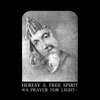 2011 is turning into the year of van Wissem. In addition to The Joy that Never Ends on Important Records, Jozef has released three collaborative records on his own Incunabulum imprint this year, including one unlikely pairing with Smegma. A Prayer for Light, recorded on Easter in 2010, features Robbie Lee, who has performed with Howling Hex and Baby Dee, as well as True Primes multi-instrumentalist Che Chen. Together they riff on a semi-ritualistic and improvised sound that makes van Wissem's music more approachable and fulfills his desire to see the lute liberated from its dusty Renaissance confines.
2011 is turning into the year of van Wissem. In addition to The Joy that Never Ends on Important Records, Jozef has released three collaborative records on his own Incunabulum imprint this year, including one unlikely pairing with Smegma. A Prayer for Light, recorded on Easter in 2010, features Robbie Lee, who has performed with Howling Hex and Baby Dee, as well as True Primes multi-instrumentalist Che Chen. Together they riff on a semi-ritualistic and improvised sound that makes van Wissem's music more approachable and fulfills his desire to see the lute liberated from its dusty Renaissance confines.
In the past three years, certain of Jozef van Wissem's compositional habits and traits have been singled out for commentary repeatedly. By now everyone knows that Jozef likes to write melodic palindromes, that he enjoys repeating these melodies over very long durations, and that he has employed some of Burrough's cut-up strategies in song forms that would otherwise sound antiquated to most ears. In addition, his lute frequently receives more attention than he does, and it's easy to understand why. Watching him play live, the lute becomes omnipresent; it's a beautiful instrument that comes with a long history, a unique sound, and peculiar mystique.
All of this makes it easy to forget just how forward-thinking van Wissem is. Whiffs of Cage-ian philosophy and minimalist sensibilities turn up in his interviews as much as they do in his music. His live sets have consisted of lute and field recordings from airports, he has played alongside Gary Lucas, whose bottle-necked resonator guitar wasn't invented until the 20th century, and he has even collaborated with legendary noise-maker, Maurizio Bianchi. Beyond the techniques and religious imagery that make up his musical persona is a performer that also wants to make the lute "sexy." On A Prayer for Light he comes close to doing that.
There is a menagerie of instruments spread across its eight brief songs, including tape machines, a portative organ, bass clarinet, banjo, bells, and a bowed rawap. There are times when they command the music more than van Wissem's lute does, and on both the first and last song, the lute isn't featured at all. When it does show up, it doesn't hog the stage. Sometimes Jozef uses it to add color to the drafty textures Chen and Lee form from their arsenal, but more frequently he turns the lute into an anchor; it provides the rhythm and forward motion, the other instruments help paint the scenery. That scenery is mostly stone walls, candle-lit rooms, dark corridors, and robed figures, so van Wissem's attitude and ascetic survive the changes in technique and emphasis.
The difference is a psychedelic edge and loose tension that arises from the way the trio interacts. There are even some rock 'n' roll moments, where booming drums and dramatic crescendos suddenly boil up from the soup of criss-crossing strings and tape. Jozef's favorite up-and-down melodies break down in places, too, causing the patterns he weaves to dissolve into tone clusters and fragmented designs. This frees the lute from its stately past—and from van Wissem's typical strategies, too. Without a particular technique or strategy guiding the group along, the music blooms and is allowed to become its own thing; the sounds breathe through the musicians rather than the musicians forcing them to leap and balk in measured ways.
I enjoy many of van Wissem's records, but I prefer hearing him like this. His compositional aspirations ring as clearly as a bell even within a group framework, and the added dimensions his band mates bring to the table, whether sexy or simply more dynamic, help underscore Jozef's singular and very contemporary language.
samples:
- LP only = no samples. Sorry!
Read More
- Administrator
- Albums and Singles
Important Records is proud to issue the fourth album, second for Important, from Nathan Amundson's Rivulets. With a beautifully authentic emotional depth Nathan's voice is his most compelling instrument, a tool for delivering pure emotion from his heart straight into yours. Representing five years of work & nearly constant touring, this album reflects the intense nature of Rivulets as a 3 piece. If you haven't seen them on tour this record will come as a revelation. Recorded, appropriately, at the Sacred Heart Music Center, a cathedral built in the late nineteenth century.
FREE MP3: Gentile Boyfriend

artist: Rivulets
title: We're Fucked
format: CD
release date: Aug 30, 2011
"The title is just a phrase that kept popping up in my head as we were recording. It reflects the feeling and atmosphere of the songs in some ways but probably has more to do with my own frustration with the world - with people and politics and the lack of any meaningful or lasting change. And just being sick of nobody out there saying anything at all. Just this completely vapid cultural/musical landscape. You know, I'm on the fringes anyway. I may as well say what I mean.
"We're Fucked" is not intended as the end of the discussion, but the beginning. It's "We're fucked. Now what?"" Nathan Amundson
Nathan Amundson is a fiscal year 2010 recipient of an Artist Support Grant from the Arrowhead Regional Arts Council, which is funded with money from the Minnesota Arts and Cultural Heritage Fund as appropriated by the Minnesota State Legislature with money from the vote of the people of Minnesota on November 4, 2008, and an appropriation from the Minnesota State Legislature.
Rivulets is the musical vehicle of singer/songwriter Nathan Amundson, who, with his spectral strumming, grainy falsetto and sparse arrangements, personifies minimalism. - CMJ
Read More
- Administrator
- Albums and Singles
Long awaited reissue of the debut release from Mehdi Amezianes Twinsistermoon project, originally released as a gorgeous handmade self released CDR in 2007, to many of Natural Snow Buildings and each of their solo project, this is the pick of all their releases, which is rather ironic being that its one of the smallest release runs in the discography of all the Natural Snow Buildings and related projects, it is infact the most limited release of all the Twinsistermoon releases. But due to the massive level of word of mouth about their releases on blogs and in the smaller press publications this release has become one of those holy grail releases. Unlessof course you have a small wedge of cash lying around doing nothing. So, finally, and with great pleasure, the much talked of reissue is finally here. The record opens with a real stunner, 'I Wish I Could Drown The World In Reverberation' is a trance inducing piece, with percussive tambourine, dreamy vocals, and shimmering strings, with a gorgeous organic rich feeling. It's followed by 'To Breath Underwater', a more pastoral folk song, akin to some late 60s/early 70s folk artists. The album as a whole focuses more on the song-based material which occasionally venture into the more far-out zone outs.
The vinyl reissue features an entire side worth of new material, all of which is exclusive to the vinyl edition and is packaged in a beautiful gatefold sleeve featuring stunning new artwork by Solange Gularte. Limited to 600 copies. 200 direct mailorder copies on regular weight coloured vinyl, 400 copies on heavyweight black virgin vinyl.
The CD reissue features an additional bonus track, which is exclusive to the CD edition and is packaged in a beautiful gatefold sleeve featuring stunning new artwork by Solange Gularte. Limited to 500 copies.
More information available at Blackest Rainbow.
Read More
- Administrator
- Albums and Singles
John Fahey: Your Past Comes Back to Haunt You (The Fonotone Years 1958-1965)
 As with all histories, context and an appreciation for the times are essential. In 1958, when the earliest of these recordings were made there were probably no more than a handful of reissues of pre-war country blues 78s available on record in the United States. The long-playing 33 1/3 record was, itself, only a recent invention. Today, with hundreds, perhaps thousands, of pre-war blues and hillbilly reissues available and in print, when it’s possible to walk into any halfway decent record store (to the extent record stores, halfway decent or otherwise, still exist) and find the complete recordings of Charley Patton or Blind Willie Johnson, it may be difficult to comprehend just how obscure and how otherworldly this music once was. — Glenn Jones, from the Introduction to Your Past Comes Back to Haunt You
As with all histories, context and an appreciation for the times are essential. In 1958, when the earliest of these recordings were made there were probably no more than a handful of reissues of pre-war country blues 78s available on record in the United States. The long-playing 33 1/3 record was, itself, only a recent invention. Today, with hundreds, perhaps thousands, of pre-war blues and hillbilly reissues available and in print, when it’s possible to walk into any halfway decent record store (to the extent record stores, halfway decent or otherwise, still exist) and find the complete recordings of Charley Patton or Blind Willie Johnson, it may be difficult to comprehend just how obscure and how otherworldly this music once was. — Glenn Jones, from the Introduction to Your Past Comes Back to Haunt You
Edited by Glenn Jones
88 page book with 5 CDs
115 tracks, most available on CD for the first time
A co-production between Dust-to-Digital and Revenant
Read More


